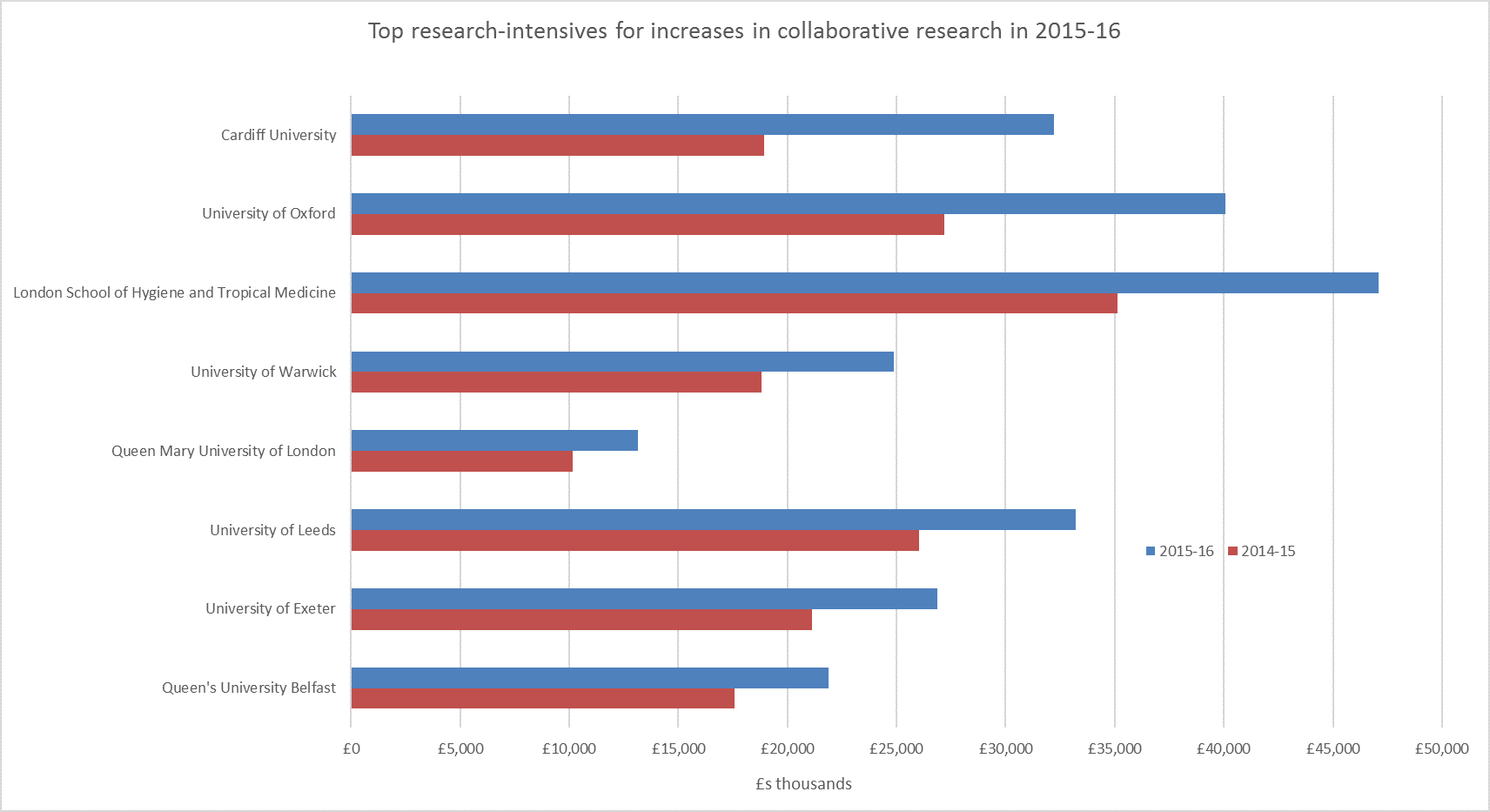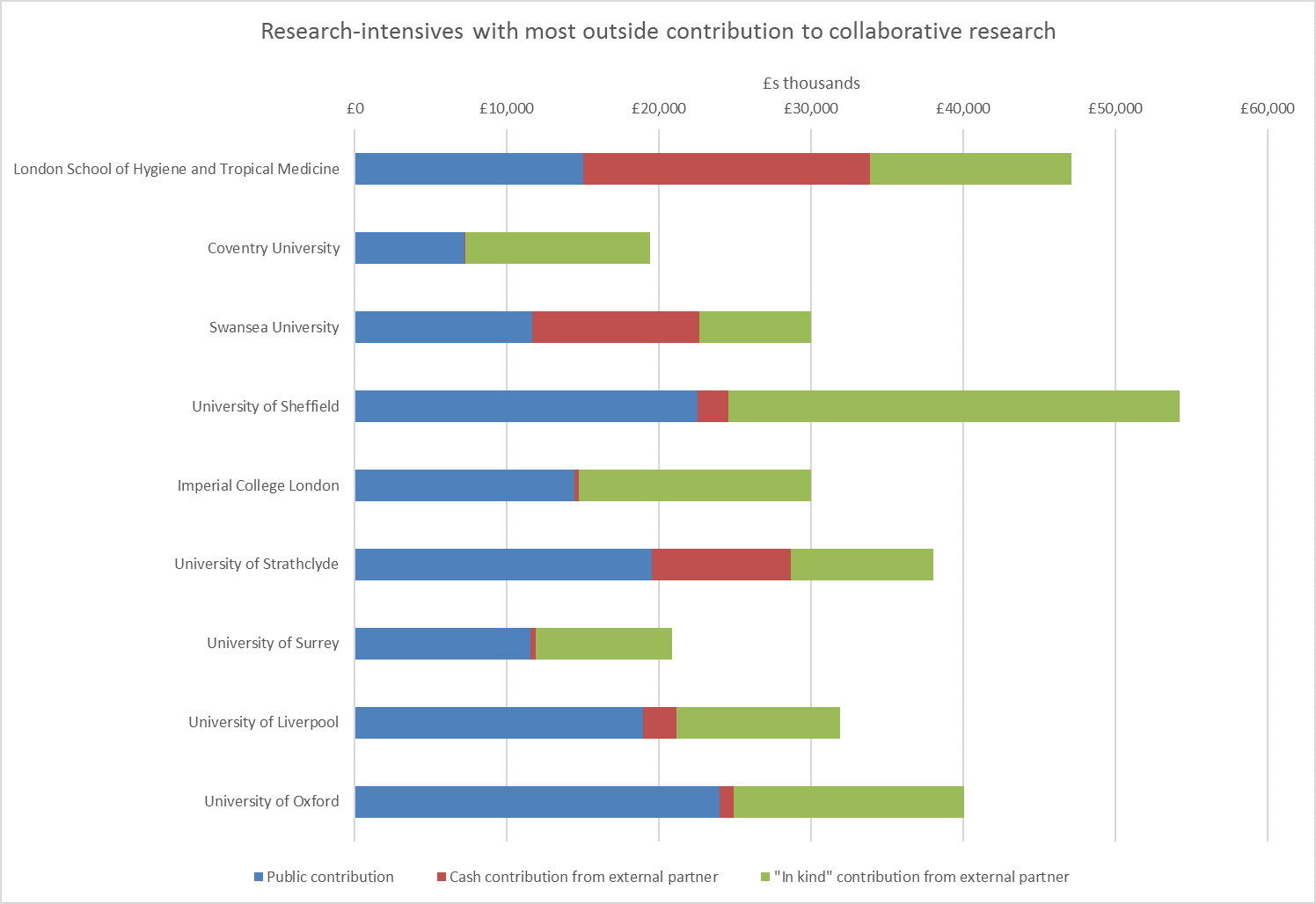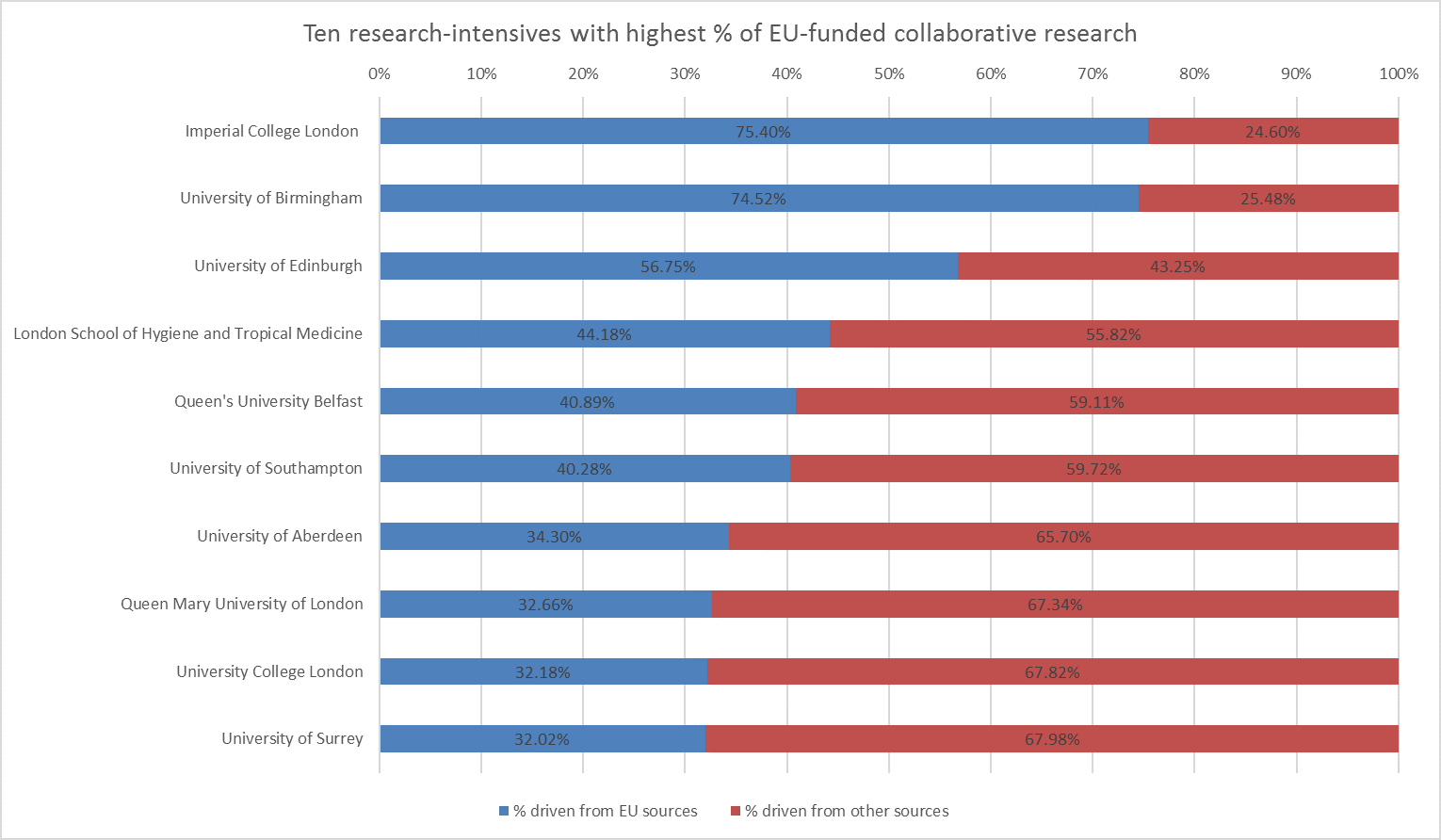New data have revealed which UK universities have been leading the charge in boosting the amount of money they are pulling in through working with industry and other external organisations.
According to figures released earlier this month, the value of research commissioned by organisations such as firms and charities reached £1.25 billion in 2015-16, while collaborative research was worth £1.3 billion in total.
It follows an upwards trend in recent years in the amount of revenue coming through the two sources, which together make up the two biggest elements of income from knowledge exchange.
A Times Higher Education analysis of the latest data, collected as part of the annual Higher Education-Business and Community Interaction survey and released by the Higher Educations Statistics Agency, shows that eight research-intensive institutions saw the value of their collaborative research, increase by more than one-fifth (see chart below).

Note: Only universities where the total value of collaborative research exceeds £10 million are included
These figures include the income that came from public sources where, for example, research councils have given the initial grant for a project that involved working with industry. For example, Cardiff University saw the value of its collaborative research go up 70 per cent to £32 million, although the vast majority of this money (£31.3 million) came from public sources.
However, the data also reveal the universities where a large contribution to collaborative research was made by commercial companies and others.
For nine research-focused institutions, at least 40 per cent of the value of their collaborative research in 2015-16 came from outside contributions: either cash or “in kind” through the use of a firm’s equipment or staff time. Three institutions – the London School of Hygiene and Tropical Medicine, University of London, Coventry University and Swansea University – had proportions above 60 per cent.

Note: Only universities where the total value of collaborative research exceeds £10 million are included
The data also show which universities gain a large proportion of their collaborative research money from European Union schemes where future participation of UK institutions may be in doubt due to Brexit. These are often universities with strong links to disciplines such as physics and engineering that can benefit from working across national borders: for instance three-quarters of Imperial College London’s total collaborative research money flows from schemes leveraged by EU funding.

Note: Only universities where the total value of collaborative research exceeds £10 million are included
For contracted research, the below tables show the 10 UK research-intensive universities with the largest increases and falls in the amount of income from this stream in 2015-16, although such year-on-year comparisons for individual institutions do need to be treated with caution as they can be distorted by large-value contracts starting or finishing in a particular year.
Largest % increases in value of contract research in 2015-16 (£ thousands)
| Institution | 2015-16 | 2014-15 | % increase |
| University of Nottingham | £30,882 | £22,503 | 37.24% |
| University of Greenwich | £10,710 | £8,766 | 22.18% |
| University of Oxford | £168,820 | £142,102 | 18.80% |
| Queen’s University Belfast | £18,284 | £15,788 | 15.81% |
| University of Bristol | £49,871 | £43,408 | 14.89% |
| University of Birmingham | £49,096 | £42,860 | 14.55% |
| University of Leicester | £13,566 | £11,888 | 14.12% |
| University College London | £89,392 | £78,647 | 13.66% |
| University of Sussex | £12,252 | £10,877 | 12.64% |
| University of Liverpool | £14,816 | £13,334 | 11.11% |
Note: Only includes universities with contract research income in 2015-16 higher than £10 million
Largest % falls in value of contract research in 2015-16 (£ thousands)
| Institution | 2015-16 | 2014-15 | % fall |
| University of Exeter | £14,740 | £19,914 | -25.98% |
| University of Leeds | £46,532 | £56,022 | -16.94% |
| University of Warwick | £26,856 | £30,586 | -12.20% |
| University of Dundee | £12,231 | £13,661 | -10.47% |
| Imperial College London | £111,342 | £120,590 | -7.67% |
| University of Sheffield | £38,085 | £40,173 | -5.20% |
| University of York | £16,027 | £16,754 | -4.34% |
| King’s College London | £45,058 | £46,534 | -3.17% |
| University of Aberdeen | £12,130 | £12,468 | -2.71% |
| University of Strathclyde | £13,337 | £13,546 | -1.54% |
Note: Only includes universities with contract research income in 2015-16 higher than £10 million
According to those with expertise in knowledge exchange in UK higher education, the overall picture, especially in the past couple of years, has been very positive as firms have become more willing to invest in research and development after recovering from the economic downturn after the financial crisis.
However, there has also been a marked improvement in universities’ own performance, experts say, with collaborative research success often feeding into a boost for contract research: the former can create the sort of personal relationships between academics and businesses that often lead to research projects being commissioned.
Find out more about THE DataPoints
THE DataPoints is designed with the forward-looking and growth-minded institution in view
Register to continue
Why register?
- Registration is free and only takes a moment
- Once registered, you can read 3 articles a month
- Sign up for our newsletter
Subscribe
Or subscribe for unlimited access to:
- Unlimited access to news, views, insights & reviews
- Digital editions
- Digital access to THE’s university and college rankings analysis
Already registered or a current subscriber? Login








